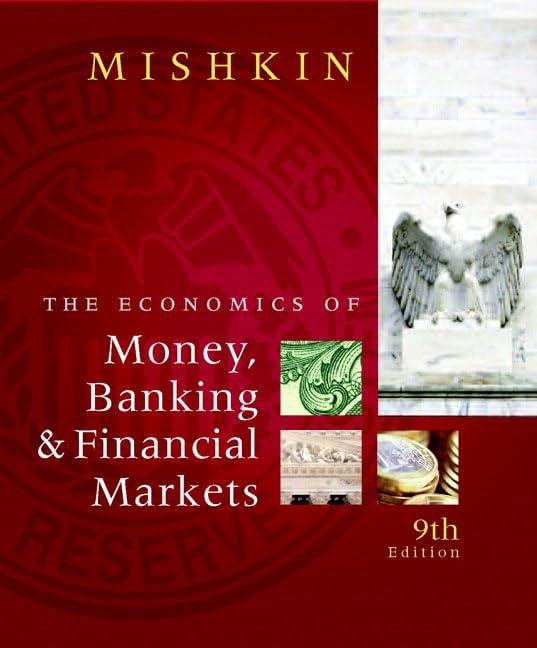26 PART ONE FOUNDATIONS OF INTERNATIONAL FINANCIAL MANAGEMENT Country Total EXHIBIT A. 2 Input/Output with Free Trade 2050 40 10 Units of input 1000.000) Food Textiles Output per unit of input fibor yards) Food Textiles II. Total output (lbs. or yards) (000.000 Food Textiles IV. Consumption (lbs. or yards) 000,000) Food Textiles 850 100 120 750 40 160 225 70 625 850 160 90 is relatively more efficient in producing textiles and Country B is relatively more effi- cient in producing food. That is, Country A's (B's) opportunity cost for producing textiles (food) is less than Country B's (A's). A relative efficiency that shows up via a lower opportunity cost is referred to as a comparative advantage. Exhibit A.2 shows that when there are no restrictions or impediments to free trade, such as import quotas, import tariffs or costly transportation, the economic well-being of the citizens of both countries is enhanced through trade. Exhibit 1.2 shows that Country A has shifted 20,000,000 units from the production of food to the production of textiles where it has a comparative advantage and that Country B has shifted 10,000,000 units from the production of textiles to the production of food where it has a comparative advantage. Total output is now 850,000,000 pounds of food and 160,000,000 yards of textiles. Suppose that Country A and Country B agree on a price of 2.50 pounds of food for one yard of textiles, and that Country A sells Country B 50,000,000 yards of textiles for 125.000.000 pounds of food. With free trade, Exhibit A.2 makes it clear that the citizens of each country have increased their consumption of food by 25.000.000 pounds and textiles by 10,000,000 yards. PROBLEMS 1. Country C can produce seven pounds of food or four yards of textiles per unit of input. Compute the opportunity cost of producing food instead of textiles. Similarly, compute the opportunity cost of producing textiles instead of food. 2. Consider the no-trade input/output situation presented in the following table for countries X and Y. Assuming that free trade is allowed, develop a scenario that will benefit the citizens of both countries. Input/Output without Trade Country Total 1 Units of input (000.000 Food Textiles Output per unit of inputs or yards) Food Textiles Total output lbs. or yards 1000.000) 70 40 60 30 Food Textiles IV. Consumption [bs or yards) 1000.000) Food Textiles 1.190 200 300 60 1,490 260 1.190 200 300 60 1,490 260 26 PART ONE FOUNDATIONS OF INTERNATIONAL FINANCIAL MANAGEMENT Country Total EXHIBIT A. 2 Input/Output with Free Trade 2050 40 10 Units of input 1000.000) Food Textiles Output per unit of input fibor yards) Food Textiles II. Total output (lbs. or yards) (000.000 Food Textiles IV. Consumption (lbs. or yards) 000,000) Food Textiles 850 100 120 750 40 160 225 70 625 850 160 90 is relatively more efficient in producing textiles and Country B is relatively more effi- cient in producing food. That is, Country A's (B's) opportunity cost for producing textiles (food) is less than Country B's (A's). A relative efficiency that shows up via a lower opportunity cost is referred to as a comparative advantage. Exhibit A.2 shows that when there are no restrictions or impediments to free trade, such as import quotas, import tariffs or costly transportation, the economic well-being of the citizens of both countries is enhanced through trade. Exhibit 1.2 shows that Country A has shifted 20,000,000 units from the production of food to the production of textiles where it has a comparative advantage and that Country B has shifted 10,000,000 units from the production of textiles to the production of food where it has a comparative advantage. Total output is now 850,000,000 pounds of food and 160,000,000 yards of textiles. Suppose that Country A and Country B agree on a price of 2.50 pounds of food for one yard of textiles, and that Country A sells Country B 50,000,000 yards of textiles for 125.000.000 pounds of food. With free trade, Exhibit A.2 makes it clear that the citizens of each country have increased their consumption of food by 25.000.000 pounds and textiles by 10,000,000 yards. PROBLEMS 1. Country C can produce seven pounds of food or four yards of textiles per unit of input. Compute the opportunity cost of producing food instead of textiles. Similarly, compute the opportunity cost of producing textiles instead of food. 2. Consider the no-trade input/output situation presented in the following table for countries X and Y. Assuming that free trade is allowed, develop a scenario that will benefit the citizens of both countries. Input/Output without Trade Country Total 1 Units of input (000.000 Food Textiles Output per unit of inputs or yards) Food Textiles Total output lbs. or yards 1000.000) 70 40 60 30 Food Textiles IV. Consumption [bs or yards) 1000.000) Food Textiles 1.190 200 300 60 1,490 260 1.190 200 300 60 1,490 260







